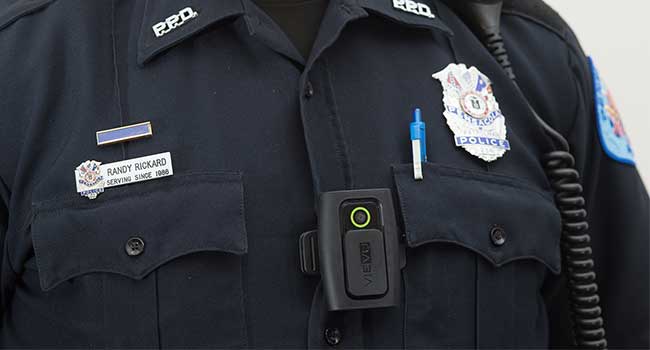
Report Shows the Limits of Police Body Cameras
- By Sydny Shepard
- Feb 10, 2016
Body-worn cameras for police have been seen frequently in the news recently, spurred by the deaths of unarmed civilians. While activists and families call for greater police accountability, police departments want to show proof of their perspective in tense situations. The increase in bystander cellphone footage has contributed to the demand for more video evidence of police encounters, but the existence of police footage calls into question many issues such as privacy, access and storage.
The Brennan Center for Justice has recently published a report on these issues. The center pulled together policies from police departments across the country to compare and contrast their views on things such as how footage is stored, limits on recording civilians, police access to footage and public access to footage.
One of the most inconsistent policies seen from department to department was the inattention to privacy. Several cities have policies that prohibit things like recording in locker rooms, bathrooms or doctor’s offices but have absolutely no concern for privacy in people’s homes. Only four cities prohibit officers from recording in someone’s home without the owner’s permission during a content search. Another 14 cities don’t address the home at all, there for allowing the camera to record without any restrictions. Four explicitly allow police to record in private homes without consent and no city prohibits police to record in private homes altogether.
Perhaps a reason for the inconsistency in policy is due to the amount of domestic disputes that take place in private homes. Police officers will tell you that these kinds of calls are amongst the most controversial and potentially dangerous calls they make. Some argue that there should be a ban on recording during these calls out of privacy for the victims, while others argue that because of the amount of evidence seen from the moment the police officer arrives, that it is most beneficial to record the entire call. Some cities leave it up to the police officer’s discretion whether or not he or she decides to record.
Another issue is access to the footage. This is an important detail as many police departments do not have the funds to forever keep hours upon hours of non-evidentiary footage. The center found that eight of the 25 police departments involved in the study destroy videos that are not evidence in active cases after 180 days. Seven of the departments keep their videos for up to two years. The other 10 do not have a specific time frame when working with stored data.
An interesting debate that seems to spawn from the storage of video is whether or not the police officers are allowed to view their footage when writing up reports about use of force incidents. Some argue that the officer should not be able to view the footage because the camera is supposed to be used as a tool of transparency and accountability. The center found that 15 of the police departments allowed their officers to view the footage before writing their reports or giving statements. Five allow police to view the video only after they have given their statements.
The most revealing thing we may learn from these policies is which cities have public officials willing to adopt and implement policies to keep law enforcement agencies accountable, and in which cities law enforcement interests wield the power.
The Brennan Center said their project is ongoing. They’ll add new policies and charts as new agencies adopt the body-worn cameras.
About the Author
Sydny Shepard is the Executive Editor of Campus Security & Life Safety.